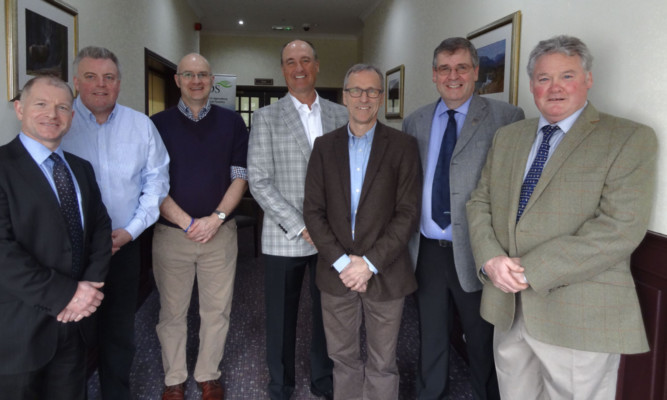Whether it was intentional or not, Scottish Agronomy’s conference in Perth exposed some remarkable contrasts and comparisons.
The first would be within the 30-year-old organisation itself. When it was founded in 1985 it had 48 members; now it has 200, provides agronomy services on more than 50,000 hectares, and is one of the largest trial site providers in the UK.
Its members’ businesses have become streamlined, too. Arable returns may be poor at the moment but Bruce Ferguson, general manager of Frontier in Scotland, pointed to a brighter future.
Globally, demand for cereals and oilseeds looked strong with more than one billion people in India alone expected to move into the wealthier middle classes 16 years from now.
China had increased its soya imports five-fold over the last 10 years and the trend would continue.
Moving much nearer home and to the near future Mr Ferguson expected spring barley supplies to be much tighter in the 2015/16 season. Large areas of winter cereals had already been sown and the joint effect of greening measures would eat further into the acreage.
There was a contrast made, too, between arable farming in Scotland and in Denmark.
Scottish farmers may fear loss of agrochemicals and nitrogen restrictions, but adviser Poul Henning Petersen described a far stricter regime in his home country. The guiding principle had been “use as little as possible but as much as necessary” for 25 years.
Now there was a new pesticide tax levied on all agrochemicals. Those deemed to pose the highest risk to the environment, such as some blackgrass herbicides, were taxed at as much as 63% of their price.
Those regarded as less harmful might be taxed at 5%, but on average Danish farmers were paying 35 euros per hectare in tax.
Fertiliser use was similarly restricted but by penalties rather than taxation. Maximum nitrogen application had to be calculated for each crop much as it is in the parts of Scotland zoned as Nitrate Vulnerable Zones (NVZs) but with tighter limits.
For example a winter wheat crop on sandy loam soils might be restricted to a yield-inhibiting 152 kg/ha.
If pig slurry was applied this would reduce to only 44kg/ha. Anyone exceeding the limits faced fines of 1.4 euros per hectare per kg of extra nitrogen.
As regards herbicide loss this could be mitigated to some extent by using new high speed GPS-guided tractor-mounted hoes.
Part of the pesticide tax was diverted to subsidising this sort of innovation.
The biggest contrast of the day came when Saskatchewan-based John Deere dealer Grant McGrath took to the podium.
Compared to the EU system, which is hidebound by restrictions, his tale was of flat-out agricultural production over the province’s 13m hectares of cropland.
His customer base for Western Sales, the company he heads up, had changed markedly in recent years with larger-scale operations to the fore. One of his customers ran 14 combines and eight 75ft wide one-pass minimum tillage drilling rigs.
Over the last decade he had become aware of how integrated precision farming had become. Around 65% of the inquiries to the company’s call centre were monitor related, and operators had become so reliant on autosteer they would rather park up than continue without it.
Mr McGrath has responded by integrating agronomy and precision farming services into a package known as FieldSmart. “It combines unparalleled data management with unbiased crop input prescriptions and crop scouting by FieldSmart agronomists,” he said.
The UK is not being left behind when it comes to precision farming.
Indeed Jim Wilson, managing director of Brechin-based Soilessentials, was able to point to a whole new generation of highly sophisticated technology capable of analysing and correcting yield limiting factors.
“Data management is now one of the biggest problems, but cloud based technology has come to the rescue,” he said.
